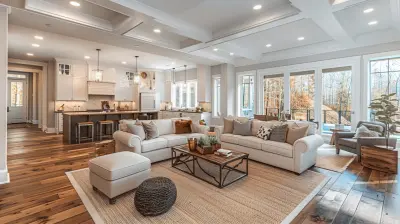How to Convert Your Basement into a Livable Space
7 August 2025
Have you ever looked at your basement and thought, "This could be so much more than just a storage space"? You’re not alone! Many homeowners are realizing the potential of their basements and transforming them into beautiful, functional living areas. Whether you want an extra bedroom, a cozy home theater, or a stylish home office, your basement can be the perfect space for it.
But before you start bringing in furniture and picking out paint colors, you need a solid plan. Basement renovations come with unique challenges—like moisture control, lighting, and ventilation—but with the right approach, you can turn a dark, unused space into a warm and inviting part of your home.
Let’s walk through the process step by step and turn your basement into a place you’ll love spending time in. 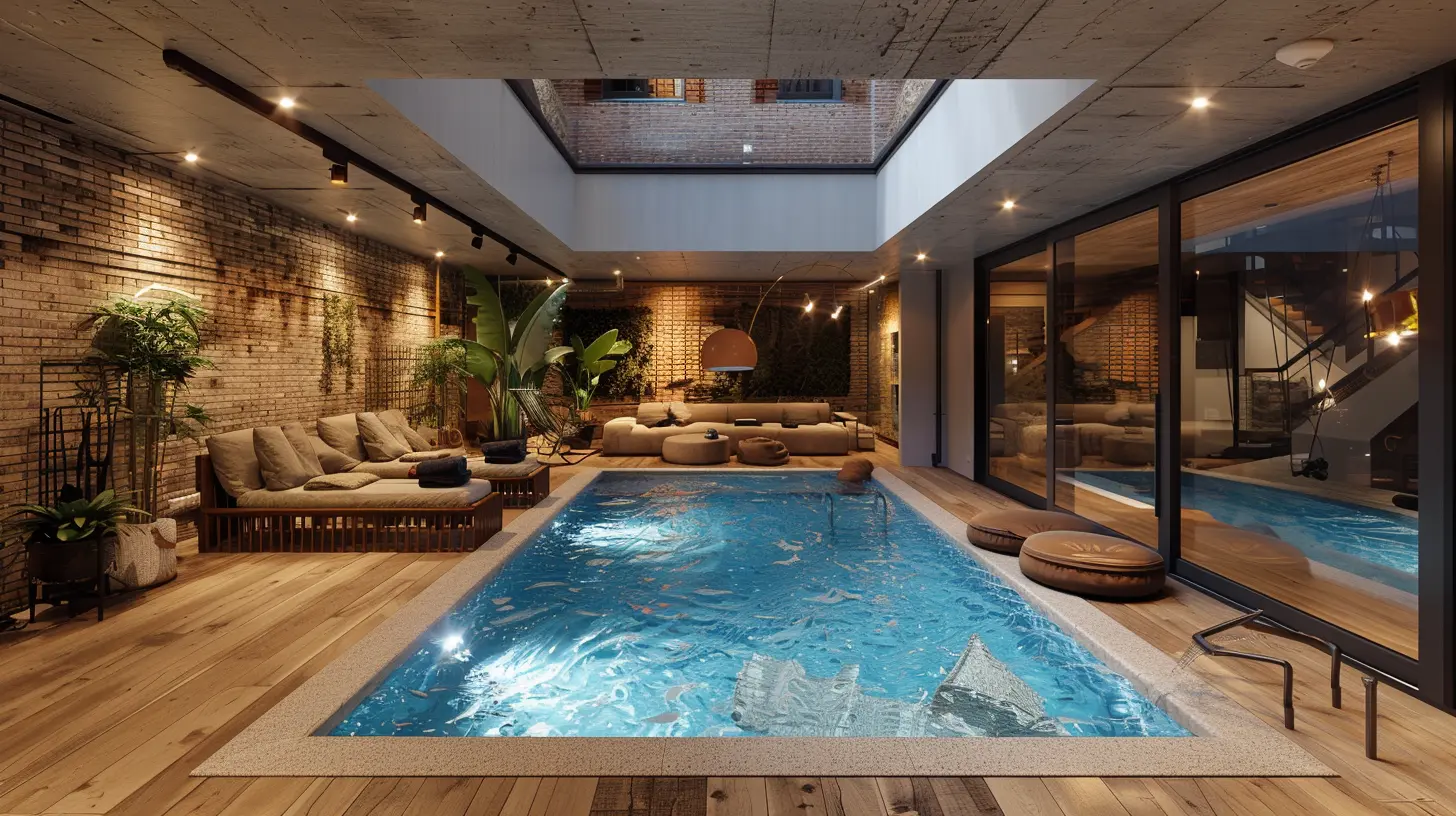
1. Assess the Space and Plan Accordingly
Before picking up a hammer, take a good look at your basement. Not all basements are created equal, so you need to evaluate:- Ceiling height – Is there enough headroom? Many basements have low ceilings, which could impact what kind of space you create.
- Moisture levels – Basements are prone to dampness. Check for any signs of leaks or mold before starting renovations.
- Existing utilities – Where are your electrical panels, plumbing lines, and HVAC ducts located? These will determine what changes you can make.
Once you've analyzed the space, sketch out a clear plan (or hire a designer). Think about how you want to use the basement—do you need an extra bedroom, a playroom for the kids, or maybe a quiet home office? The design should fit your needs and lifestyle. 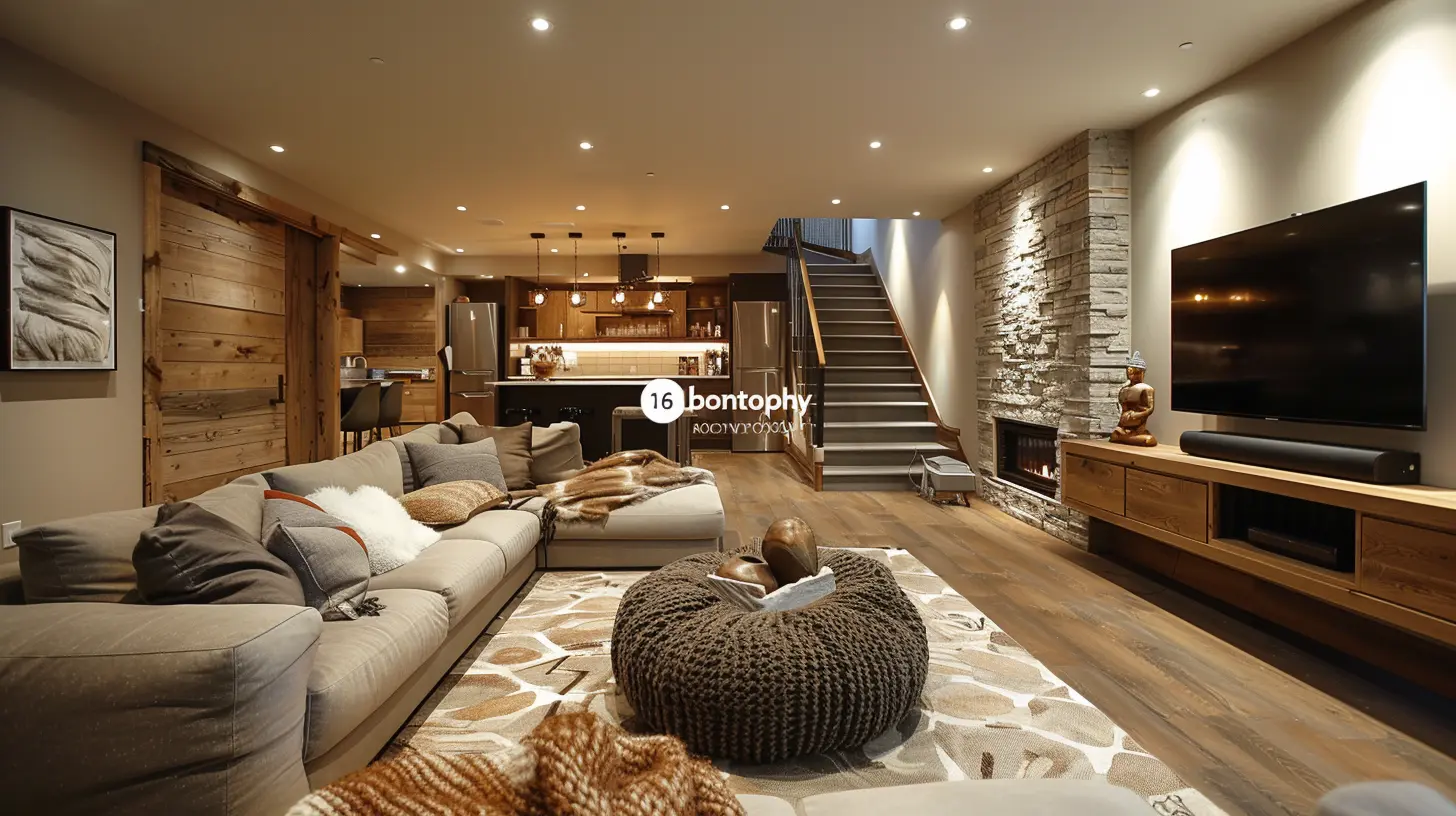
2. Solve Any Moisture Problems
Moisture is the number one enemy of basement renovations. If your basement is damp, musty, or prone to flooding, you need to address these issues before anything else.How to Keep Moisture at Bay:
- Seal cracks and leaks – Use waterproof sealants on walls and floors to prevent water from seeping in.- Improve drainage – Ensure gutters and downspouts are directing water away from your foundation.
- Install a sump pump – This is a lifesaver if you have a basement prone to flooding.
- Use a dehumidifier – A high-quality dehumidifier will help keep humidity levels under control and prevent mold growth.
Taking care of moisture problems early will save you from costly repairs down the road. 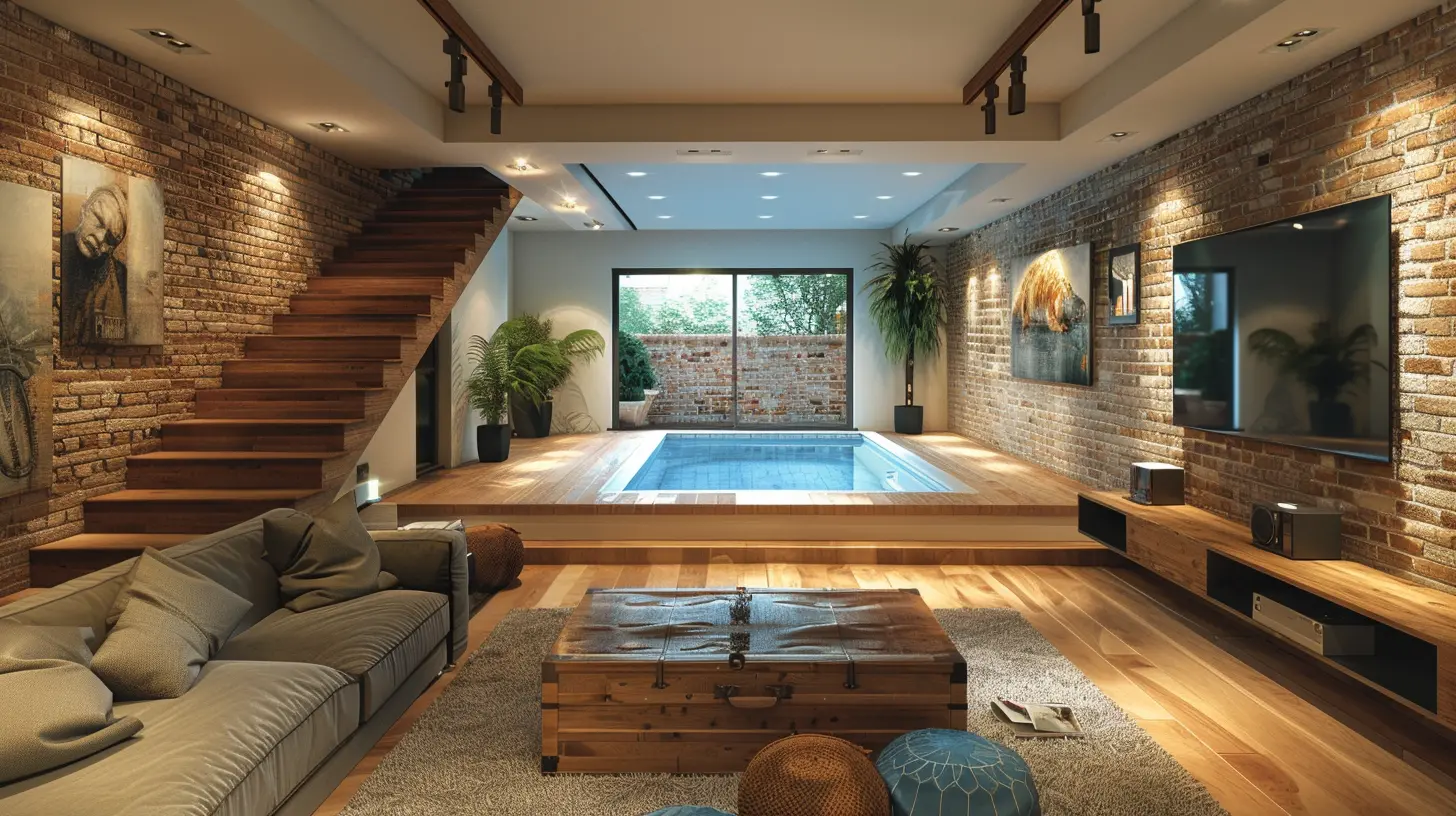
3. Enhance Lighting to Brighten Up the Space
Basements often lack natural light, making them feel dark and uninviting. But don’t worry—smart lighting choices can completely transform the mood.Best Lighting Tips:
- Utilize recessed lighting – Since basements usually have lower ceilings, recessed lights help conserve space while providing ample illumination.- Add floor and table lamps – Layering light sources gives a cozy, lived-in feel.
- Use light-colored walls and flooring – Lighter shades reflect light, making the space feel brighter and bigger.
- Consider egress windows – If possible, add windows or enlarge existing ones to bring in natural light and meet safety requirements.
A well-lit basement feels warmer, more welcoming, and less like a dungeon! 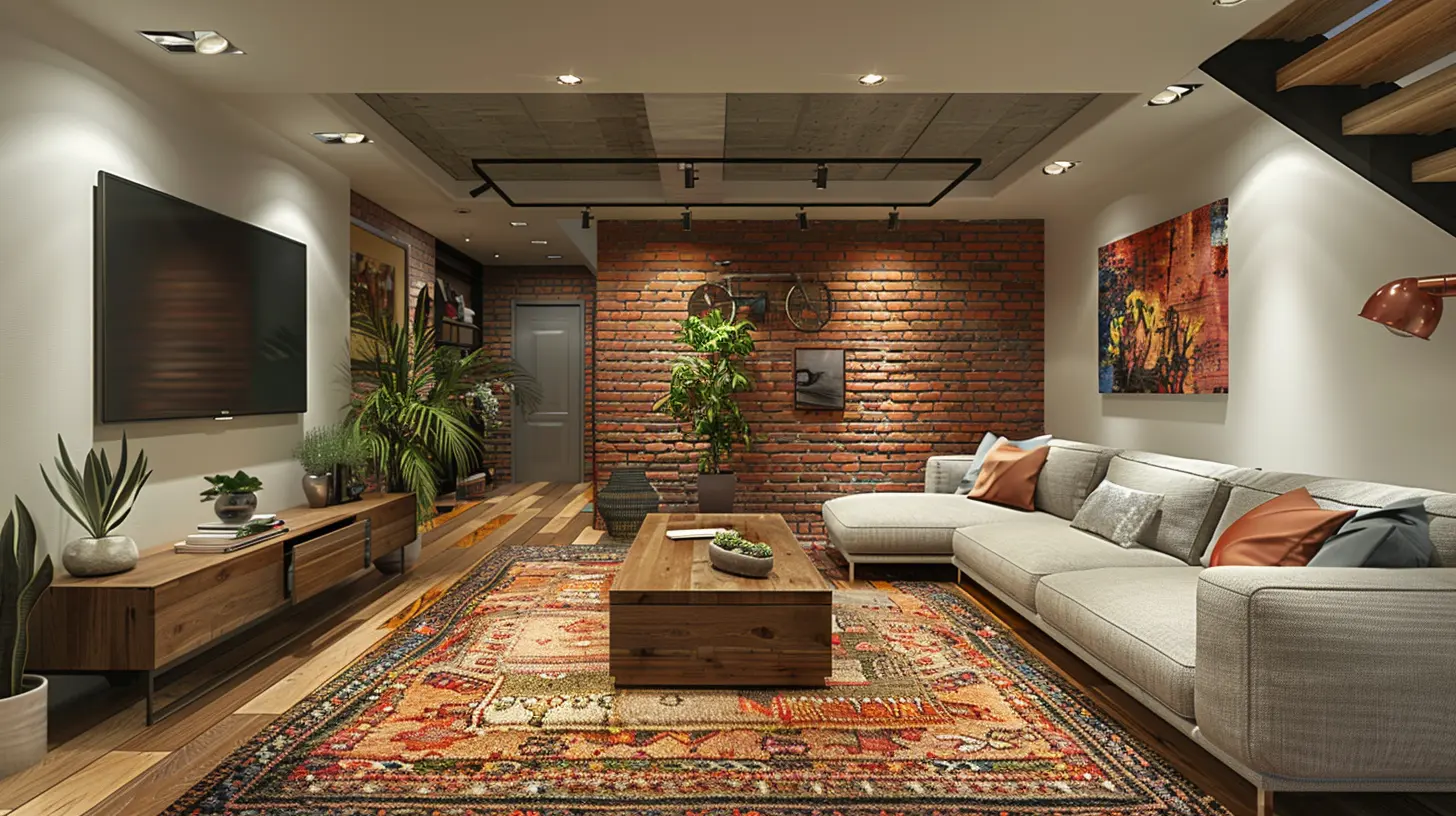
4. Insulate and Regulate Temperature
Basements tend to be colder than the rest of the house, so insulation is a must. A properly insulated basement will not only feel more comfortable but also help reduce your energy bills.Insulation Tips:
- Use spray foam or rigid foam insulation – These are great options for keeping moisture out while maintaining warmth.- Insulate floors – Carpeting or installing a subfloor can prevent the cold from seeping up through concrete.
- Seal air leaks – Use weatherstripping and caulk to keep drafts at bay.
With proper insulation, your basement will feel just as cozy as the rest of your home.
5. Choose the Right Flooring
Not all flooring is suitable for basements due to potential moisture issues. Carpeting adds warmth but can trap moisture, while hardwood may warp over time.Best Basement Flooring Options:
- Vinyl plank flooring – Durable, water-resistant, and comes in wood-like designs.- Laminate flooring – Budget-friendly and easy to install, but should have a moisture barrier underneath.
- Epoxy-coated concrete – A low-maintenance, industrial-chic option.
- Tile flooring – Perfect for water-prone basements, though it can be cold without radiant heating.
Pick flooring that suits your style while being practical for the basement environment.
6. Create Functional Zones
A basement can serve multiple purposes when properly designed. If you’re planning a multi-use space, divide it into functional zones.Great Ideas for Basement Spaces:
- Home theater – Install a projector, comfy seating, and soundproof walls for the ultimate movie night.- Guest suite – Include a small bathroom and cozy decor to make visitors feel at home.
- Game room – Add a pool table, dartboard, or even a mini bar for entertaining guests.
- Home gym – Rubber flooring, mirrors, and good ventilation make for a perfect workout space.
- Office or study area – A quiet space for work or homework, free from distractions.
Think about what fits your lifestyle and make the space as functional as possible.
7. Add Smart Storage Solutions
Storage is essential, especially if your basement is doubling as a living space. Without good organization, clutter can quickly take over.Clever Storage Ideas:
- Built-in shelves – Maximize wall space for books, decor, or storage bins.- Under-stair storage – Use the area beneath your staircase for extra drawers or cabinets.
- Multi-functional furniture – Sofas with hidden storage or foldaway desks can save space.
- Pegboards and hooks – Hang tools, workout equipment, or craft supplies efficiently.
A well-organized basement feels larger and more inviting.
8. Ensure Proper Ventilation and Air Quality
Since basements have limited airflow, poor ventilation can lead to stuffy air and even mold problems.Ways to Improve Air Circulation:
- Install an HVAC system extension – If possible, connect your basement to your home’s heating and cooling system.- Use exhaust fans – These help remove stale air and moisture.
- Open windows (if available) – Fresh air makes a huge difference.
- Air purifiers and houseplants – Great for improving indoor air quality.
Fresh air is crucial for a comfortable and healthy living space.
9. Add Personal Touches and Final Details
Now that all the technical work is done, it’s time to make the space feel like home!Ways to Make Your Basement Feel Cozy:
- Choose warm, inviting decor – Soft furnishings, ambient lighting, and cozy textiles work wonders.- Hang artwork or photos – Personal touches instantly make the space feel more lived-in.
- Introduce plants – Greenery adds warmth, color, and even improves air quality.
- Use rugs and curtains – They help soften the space, making it feel homier.
This is the fun part—make it a space you truly enjoy spending time in!
Final Thoughts
Converting your basement into a livable space isn’t just a great way to add extra square footage to your home—it’s a chance to create something truly special. Whether it's a comfy hangout for the family, a quiet retreat, or a stylish guest suite, a finished basement adds both functionality and value to your home.Sure, it requires planning, preparation, and a bit of elbow grease, but in the end, the results are more than worth it. Think of it as unlocking the hidden potential beneath your feet—turning what was once a forgotten space into a beautiful extension of your home.
So, what are you waiting for? Roll up your sleeves and start transforming your basement into the dream space you've always envisioned!
all images in this post were generated using AI tools
Category:
Home Improvement TipsAuthor:

Melanie Kirkland
Discussion
rate this article
1 comments
Thaddeus Sharpe
Basement vibes: reclaim the dungeon, unleash your stylish sanctuary!
August 14, 2025 at 11:06 AM

Melanie Kirkland
Absolutely! Embrace the basement's potential—transform it into a cozy, stylish retreat with creative decor and smart design!


